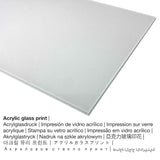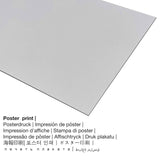Giovanni Battista Moroni, 1553 - Bongos Bartholomew (died 1584) - fine art print
Tax included. Shipping calculated at checkout.
In-depth product information
Bongos Bartholomew (died 1584) was created by the mannerist painter Giovanni Battista Moroni. The version of the work of art was made with the size: 40 x 32 1/4 in (101,6 x 81,9 cm). Oil on canvas was used by the painter as the medium of the artwork. This artwork belongs to the digital collection of The Metropolitan Museum of Art. With courtesy of: The Metropolitan Museum of Art, New York, Purchase, Joseph Pulitzer Bequest, 1913 (license: public domain). The creditline of the artpiece is the following: Purchase, Joseph Pulitzer Bequest, 1913. Furthermore, alignment is in portrait format and has a ratio of 1 : 1.2, which implies that the length is 20% shorter than the width. Giovanni Battista Moroni was a male painter, whose artistic style can be classified as Mannerism. The Mannerist artist lived for a total of 58 years, born in 1520 and passed away in the year 1578.
Original artwork specifications as provided by the museum's website (© - The Metropolitan Museum of Art - The Metropolitan Museum of Art)
Dressed in his professorial robes and three-cornered hat, the legal scholar Bartolomeo Bonghi is shown holding a book on Roman civil law dedicated to him by its author in 1553. Through the open window is a tower that was one of the city of Bergamo’s most identifiable landmarks. Moroni was admired throughout northern Italy for his ability to capture his sitters "from life," or "from nature," in the words of the Venetian artist Titian. Works such as this were doubtless studied by the young Caravaggio.
Structured information on the piece of art
| Title of the piece of art: | "Bongos Bartholomew (died 1584)" |
| Categorization of the artpiece: | painting |
| Generic term: | classic art |
| Century: | 16th century |
| Created in: | 1553 |
| Artwork age: | over 460 years |
| Original medium: | oil on canvas |
| Original artwork dimensions: | 40 x 32 1/4 in (101,6 x 81,9 cm) |
| Museum / collection: | The Metropolitan Museum of Art |
| Location of the museum: | New York City, New York, United States of America |
| Web URL: | www.metmuseum.org |
| License of artwork: | public domain |
| Courtesy of: | The Metropolitan Museum of Art, New York, Purchase, Joseph Pulitzer Bequest, 1913 |
| Creditline: | Purchase, Joseph Pulitzer Bequest, 1913 |
The artist
| Artist: | Giovanni Battista Moroni |
| Additional names: | j. b. moroni, g.b. moroni, giovanni batiste moroni, Morroni, moroni g.b., Moron di Bergamo, Moroni Giov. Batt., Moron da Bergamo, moroni giovanni battista, Moroni Giovanni Battista, moroni giovanni baptista, Morone dà Bergamo, Morone d'Albino, Moronni, giov. battista moroni, moroni gianbattista, gian battista moroni, Moroni, Moroni Giovan Battista, g. b. moroni, Moron da Brescia, moroni gian battista, Giovanni moroni, Moron, moroni giovanni battista, Moroni da Bergamo, Giambattista Moroni, Giovanni Battista Moroni, Moron de Brescia, Giovanni Battista Morone, Moroni Giambattista, Moroni Giovan, giov. batt. moroni, Moroni Giovanni, Morone Giambattista, Morone, Marone |
| Gender: | male |
| Nationality: | Italian |
| Professions of the artist: | painter |
| Home country: | Italy |
| Classification of the artist: | old master |
| Art styles: | Mannerism |
| Lifetime: | 58 years |
| Year of birth: | 1520 |
| Died: | 1578 |
Possible material choices
We offer a range of various sizes and materials for every product. The following sizes and materials are the options we offer you for individualization:
- Poster print on canvas material: A poster is a UV printed sheet of canvas paper with a slight structure on the surface. Please note, that depending on the size of the poster we add a white margin between 2-6cm around the print motif, which facilitates the framing.
- Aluminium dibond print (metal): These are metal prints on aluminium dibond with a true effect of depth. The bright components of the original artpiece shimmer with a silky gloss, however without any glare. The colors are vivid and luminous, the details of the print appear crisp.
- Canvas print: The canvas print, which shall not be mistaken with a painting on a canvas, is an image applied onto cotton canvas material. It generates the special effect of three dimensionality. How do I hang a canvas on my wall? The advantage of canvas prints is that they are relatively low in weight. This means, it is quite simple to hang up the Canvas print without additional wall-mounts. Canvas prints are suitable for all types of walls.
- Acrylic glass print: A glossy acrylic glass print, which is often described as a print on plexiglass, changes your favorite artwork into home décor. Moreover, it makes a good alternative option to canvas and dibond fine art prints. The work of art is being manufactured with modern UV direct printing machines. With an acrylic glass art print contrasts plus image details will be identifiable thanks to the precise tonal gradation of the print.
Structured product details
| Article type: | wall art |
| Reproduction: | digital reproduction |
| Production process: | digital printing (UV direct print) |
| Production: | made in Germany |
| Type of stock: | on demand production |
| Product use: | art collection (reproductions), wall art |
| Alignment: | portrait alignment |
| Aspect ratio: | 1 : 1.2 |
| Image ratio meaning: | the length is 20% shorter than the width |
| Material variants: | metal print (aluminium dibond), canvas print, acrylic glass print (with real glass coating), poster print (canvas paper) |
| Canvas print (canvas on stretcher frame): | 50x60cm - 20x24", 100x120cm - 39x47", 150x180cm - 59x71" |
| Acrylic glass print (with real glass coating) sizes: | 50x60cm - 20x24", 100x120cm - 39x47" |
| Poster print (canvas paper) sizes: | 50x60cm - 20x24", 100x120cm - 39x47" |
| Dibond print (alumnium material): | 50x60cm - 20x24", 100x120cm - 39x47" |
| Art print framing: | please note that this art print has no frame |
Important note: We try the best we can in order to describe the products as exact as possible and to illustrate them visually in our shop. Nonetheless, the pigments of the printed materials, as well as the printing can diverge slightly from the presentation on the screen. Depending on the screen settings and the quality of the surface, not all colors are printed one hundret percent realistically. Considering that the fine art prints are printed and processed manually, there may as well be slight deviations in the motif's size and exact position.
© Copyright of, Artprinta (www.artprinta.com)














